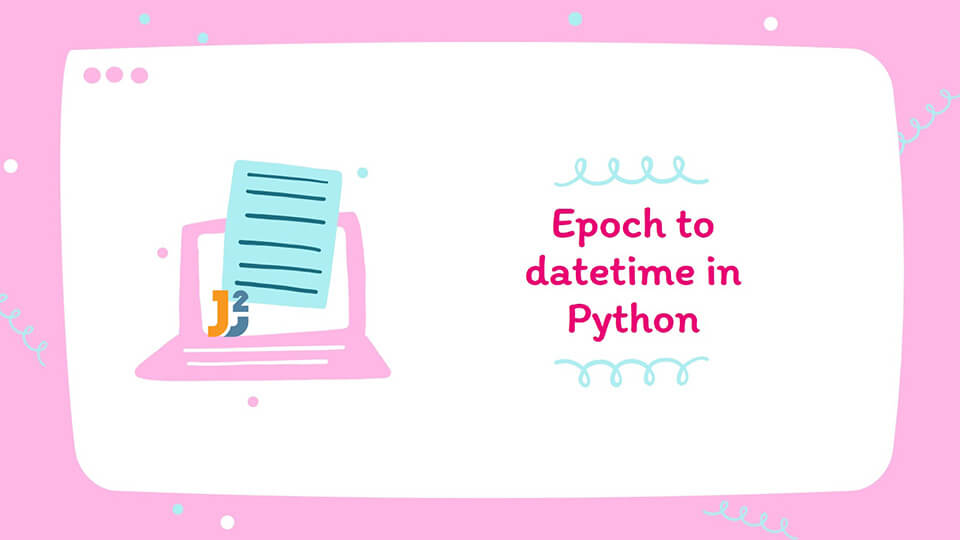Table of Contents
Epoch time refers to the time elapsed since time was started measuring on January 1, 1970. Usually, it is measured in seconds. It is also known as UNIX time.
In this article, we will convert this epoch time to datetime object in Python.
First, let us understand what this datetime is. Python offers a module named datetime which has different classes and functions to process the date and time. The datetime object can be used to store some date and time, with the time zone if required, based on the desired format.
Using the datetime.fromtimestamp() function to convert epoch to datetime
To get the date and time from the given epoch time in a datetime object, we use the datetime.fromtimestamp() function.
See the following code.
|
1 2 3 4 5 6 |
from datetime import datetime d = datetime.fromtimestamp(195668461) print(d) print(type(d)) |
Output:
In the above example, we returned the given date and time using the provided epoch time. Also, note that we printed the type of the final result.
We can also specify the time zone for this returned date and time. For this, we will also import the timezone class from the datetime module.
See the code below.
|
1 2 3 4 5 |
from datetime import datetime,timezone d = datetime.fromtimestamp(195668461, timezone.utc) print(d) |
Output:
In the above example, timezone.utc produced the final result with UTC time zone offset. Alternatively, we can also use the utcfromtimezone() function to get the same result. This works for Python 3 only. For Python 2 users, the pytz.timezone method will do the same.
One thing to remember while using these functions is that the fromtimestamp() and utcfromtimestamp() functions will fail on the Windows platform for dates before January 1, 1970. However, negative UNIX timestamps seem to work on the UNIX platforms.
To work around this, we can use utc_time = datetime(1970,1,1) + timedelta(seconds=timestamp).
Now, let us understand how to get the final result in string and based on our required format.
For example, if we wish to get the final result as a string in some format, we can use the strftime() function. We can specify the required format in the function.
For example,
|
1 2 3 4 5 |
from datetime import datetime,timezone d = datetime.fromtimestamp(195668461, timezone.utc).strftime('%d-%m-%Y %H:%M:%S') print(d) |
Output:
Note the format specified in the function, we can alter this based on our needs by accessing different parts of the datetime object using the % operator.
Alternatively, we can also use the isoformat() function with this as it returns the date and time string separated by a given separator. The separator character is provided using the sep parameter. Also, we can use the timespec parameter to format the final time.
See the code below.
|
1 2 3 4 5 |
from datetime import datetime,timezone d = datetime.fromtimestamp(195668461, timezone.utc).isoformat(sep = '|') print(d) |
Output:
Further reading:
Using the pandas.to_datetime() function to convert epoch to datetime in Python
Now, we know that the pandas DataFrame frequently has columns that store date values. For this, the pandas module is equipped with functionalities to work with the date and time values. The pd.to_datetime() function can be used to convert a column or a series object containing epoch time to readable date and time values in datetime type format. We can also specify the unit of the epoch time using the unit parameter.
For example,
|
1 2 3 4 5 |
import pandas as pd df = pd.DataFrame({'date': [181232422,271212472,381232822]}) pd.to_datetime(df['date'], unit='s') |
Output:
1 1978-08-06 00:47:52
2 1982-01-30 10:00:22
Name: date, dtype: datetime64[ns]
In the above example, we converted the date column to datetime using the to_datetime() function.
That’s all about how to convert epoch to datetime in Python.



